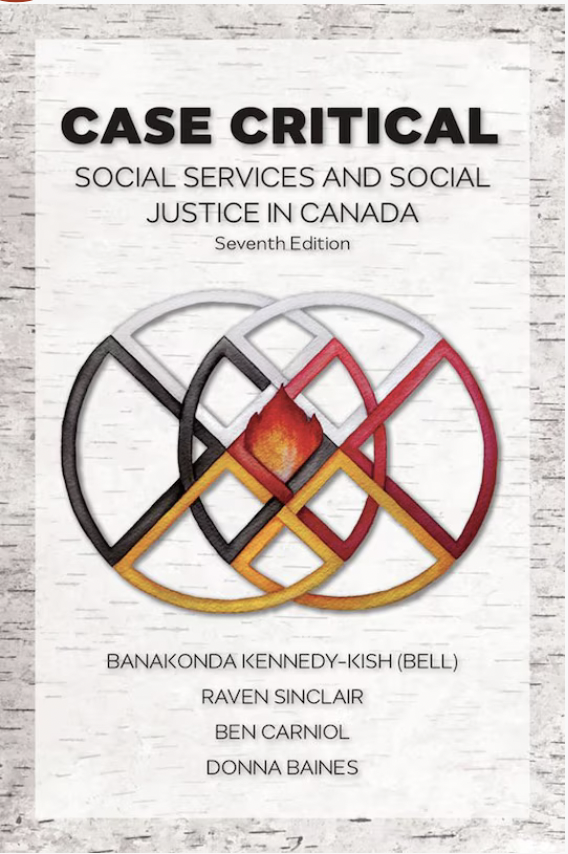Theme 5: Intersectionality (Part 19)
Excerpt from, “From social justice warrior to Gospel-centered servant of God: An educator’s reflection on critical theory and Christianity” (Linkletter, 2021).
Intersectionality is crucial to the quest for critical social justice because “social inequality cannot be understood by examining categories such as gender, race, and socioeconomic status in isolation (Sensoy & DiAngelo, 2017, p. 177).
Intersectionality can be described the following way:
The idea that identity cannot be fully understood via a single lens such as gender, race, or class alone –what legal scholar Kimberle Crenshaw (1989) called a ‘single axes framework’ (p. 139). Rather, our identities and the social meaning attributed to them must be understood in their interdependence on one another; identity is multidimensional. (Sensoy & DiAngelo, 2017, p. 175)
Andersen and Collins (2020) describe intersectionality as the intersecting experience of race, class, and gender affecting all aspects of human life and “simultaneously structure[ing] the experiences of all people in this society” (p. 4). They break the intersectional framework down into four parts.
First, they emphasize social structure by using a “matrix of domination” to see “social structure as having multiple, interlocking levels of domination that stem from the societal configuration of race, class, and gender relations” (p. 4). Yosso (2006) supports this notion of domination by acknowledging the “inextricable layers of racialized subordination” based on our physical descriptors and social groups.
The second part of the intersectional framework according to Anderson and Collins (2020) is that using an intersectional framework to analyze race, class, and gender within the “context of social structure helps us understand how race, class, and gender, are manifested differently, depending on their configuration with the others” (p. 5). Kumasi (2011) confirms this component of intersectionality by arguing that race does not “function independently of other modes of domination, such as classism or sexism” and that critical theory is skeptical of any sociological analyses that focuses only on race without recognizing its multiple layers (p. 209).
The third part of the intersectional framework according to Anderson and Collins (2020) is an emphasis on the intersection of race, class, and gender because these systems of power have had and continue to have special impact in the United States (p. 5). Intersectionality also recognizes the intersection of race, class, and gender as a structural phenomenon [and] analyzes the hierarchies and systems of domination that permeate society and limit our ability to achieve true democracy and social justice (Andersen & Collins, 2020; Pluckrose & Lindsay, 2020).
And the final part of the intersectional framework according to Anderson and Collins (2020) “is the idea that no one of these social facts [race, class, gender] singularly determines anyone’s lived experiences” (p. 34). Gottesman (2016) shares how many feminist scholars challenged the idea of a “universal rational knowing subject that exists outside of social and political context” and without gendered, raced, and classed identity (pp.97-98). They critiqued objectivity and believed knowledge had to be connected to all aspects of a person’s identity.
Intersectionality can present itself though different power structures and ‘isms. It is important to understand how ‘isms and power structures interact with one another and “operate in our own individual lives.” Multiple identities make up our “social location” and no two people are alike because our multiple identities that stem from cultural backgrounds, class position, shades of skin colour, sexual orientations, gender identifications, ethnicities, ages, physical or mental abilities, and any other “intersecting dynamics of privilege and oppression” (Bell et al., 2017, pp. 160-161).
The literature reviewed above demonstrates how intersectionality embraces the idea that people’s lives consist of many different components which all contribute to how they experience and interact with their life. It uses this understanding to attribute power to different identities and even more power when different identities collide and work together or influence one another (Sherwood, 2014).
James Lindsay (2020) uses the following example to clearly describe intersectionality:
Somebody could be hit by a combination of both racism and sexism at the same time and this experience be more complex than either prejudice on its own…Not only do black women have to deal with racism as being black and sexism as being a woman, but also the additional issues of specific prejudices about black women in particular and the burden of not knowing which of these three possible axes of discrimination is affecting her. (New Discourses, Intersectionality)
It is my opinion that intersectionality complicates human relationships and rather than bridge a gap between differing people, it creates a fragile environment which is hard to navigate. In chapter four of this research paper, I will reflect on intersectionality and Christianity more in depth.
Rebecca
References
Andersen, Margaret L., & Collins, Patricia Hill. (2020). Race, class, & gender: Intersections and inequalities (Tenth Edition). Cengage Learning Inc.
(Bell), Banakonda Kennedy-Kish., Sinclair, Raven., Carniol, Ben., & Baines, Donna. (2017). Case critical: Social services and social justice in Canada (Seventh Edition). Toronto: Between the Lines.
Gottesman, Issac. (2016). The critical turn in education: From Marxist critique to poststructuralist feminism to critical theories of race (critical social thought). Routledge.
Kumasi K. (2011). Critical race theory and education: Mapping a legacy of scholarship and activism. In Levinson, B. A.U. (Ed.), Beyond critique: Critical social theories and education (pp. 196-219). Boulder: Paradigm Publishers.
Lindsay, J. (2020, July 8). Critical theory. New Discourses. https://newdiscourses.com/tftw-critical-theory/.
Pluckrose, Helen. & Lindsay, James. (2020). Cynical Theories. Pitchstone Publishing.
Sensoy, Ö. & DiAngelo, R. J. (2017). Is everyone really equal?: An introduction to key concept in social justice education. New York: Teachers College Press.
Thompson, Sherwood. (2014). Encyclopedia of Diversity and Social Justice. Rowman & Littlefield Publishers.
Crenshaw, Kimberlé. (1989) "Demarginalizing the Intersection of Race and Sex: A Black Feminist Critique of Antidiscrimination Doctrine, Feminist Theory and Antiracist Politics,"University of Chicago Legal Forum: Vol. 1989: Iss. 1, Article 8. Available at: http://chicagounbound.uchicago.edu/uclf/vol1989/iss1/8
Yosso, Tara J. (2005). Whose culture has capital? A critical race theory discussion of community wealth. Race Ethnicity and Education 8(1), 69-91.





